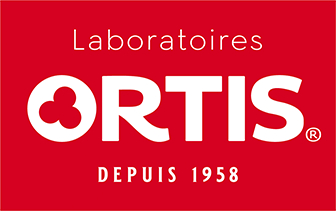
Satureioides Thyme
Latin name
Origin
Used part
Active components
Essential oil (borneol, carvacrol, thymol): its inhibiting action on inflammatory mediators is thanks to its borneol content.
Flavonoids: these substances are antioxidants, but in the case of thyme, they also have an antispasmodic effect.
Tannins: have an astringent effect and contribute to the antiseptic properties.
Usage
Bibliographical references
- Analgesic activity of three thyme species, Thymus satureioides,Thymus maroccanus and Thymus leptobotrys
K. Elhabazi, A. Ouacherif, A. Laroubi, R. Aboufatima, A.Abbad, A. Benharref, A. Zyad, A. Chait and A. Dalal.
African Journal of Microbiology Research Vol.(2) pp.262-267,October, 2008
ResearchGate:http://www.researchgate.net/publication/228637474_Analgesic_activity_of_three_thyme_species_Thymus_satureioides_Thymus_maroccanus_and_Thymus_leptobotrys/file/9fcfd50c5fab172aac.pdf
- In vivo topical anti-inflammatory and in vitro antioxidantactivities of two extracts of Thymus satureioides leaves.
Ismaili H, Milella L, Fkih-Tetouani S, Ilidrissi A, CamporeseA, Sosa S, Altinier G, Della Loggia R, Aquino R.
J Ethnopharmacol. 2004 Mar;91(1):31-6.
Pubmed: http://www.ncbi.nlm.nih.gov/pubmed/15036464
- Thymus essential oils: chemical composition and in vitroantioxidant and antibacterial activities
S. Bouhdid, M. Idaomar, A. Zhiri, D. Baudoux, N.S. Skali andJ. Abrini
Congrès International de Biochimie, 9-12 mai 2006, Agadir,Maroc.
Congres Agadir:http://membres.multimania.fr/congresagadir2006/prix2006-textes/324.20BOUHDID.pdf
- Chemical composition, antibacterial and antioxidantactivities of the essential oils from Thymus satureioides andThymus pallidus.
Ichrak G, Rim B, Loubna AS, Khalid O, Abderrahmane R, Said elM.
Nat Prod Commun. 2011 Oct;6(10):1507-10.
Pubmed: http://www.ncbi.nlm.nih.gov/pubmed/22164795
- Comparison of bacteriostatic and bactericidal activity of13 essential oils against strains with varying sensitivity toantibiotics.
Mayaud L, Carricajo A, Zhiri A, Aubert G.
Lett Appl Microbiol. 2008 Sep;47(3):167-73.
Pubmed: http://www.ncbi.nlm.nih.gov/pubmed/19552780
The health claims that feature on our website in relation to the plants contained in our products are compliant with the list of health claims awaiting final assessment by the Community authorities (cf. website of the European Commission: http://ec.europa.eu/nuhclaims/). However, they may be subject to modification following their assessment by the national competent authorities.
The health claims relating to other nutrients or substances contained in our products that feature on our site are compliant with Regulation No. 432/2012 of the Commission of 16 May 2012 which establishes a list of authorised health claims authorised in relation to food products, other than those in reference to the reduction of the risk of disease as well as community-based development and child health (cf. website of the European Commission: http://ec.europa.eu/nuhclaims/).

 Belgique
Belgique  België
België  France
France  Italia
Italia  Portugal
Portugal  España
España  United Kingdom
United Kingdom  Κύπρος
Κύπρος 